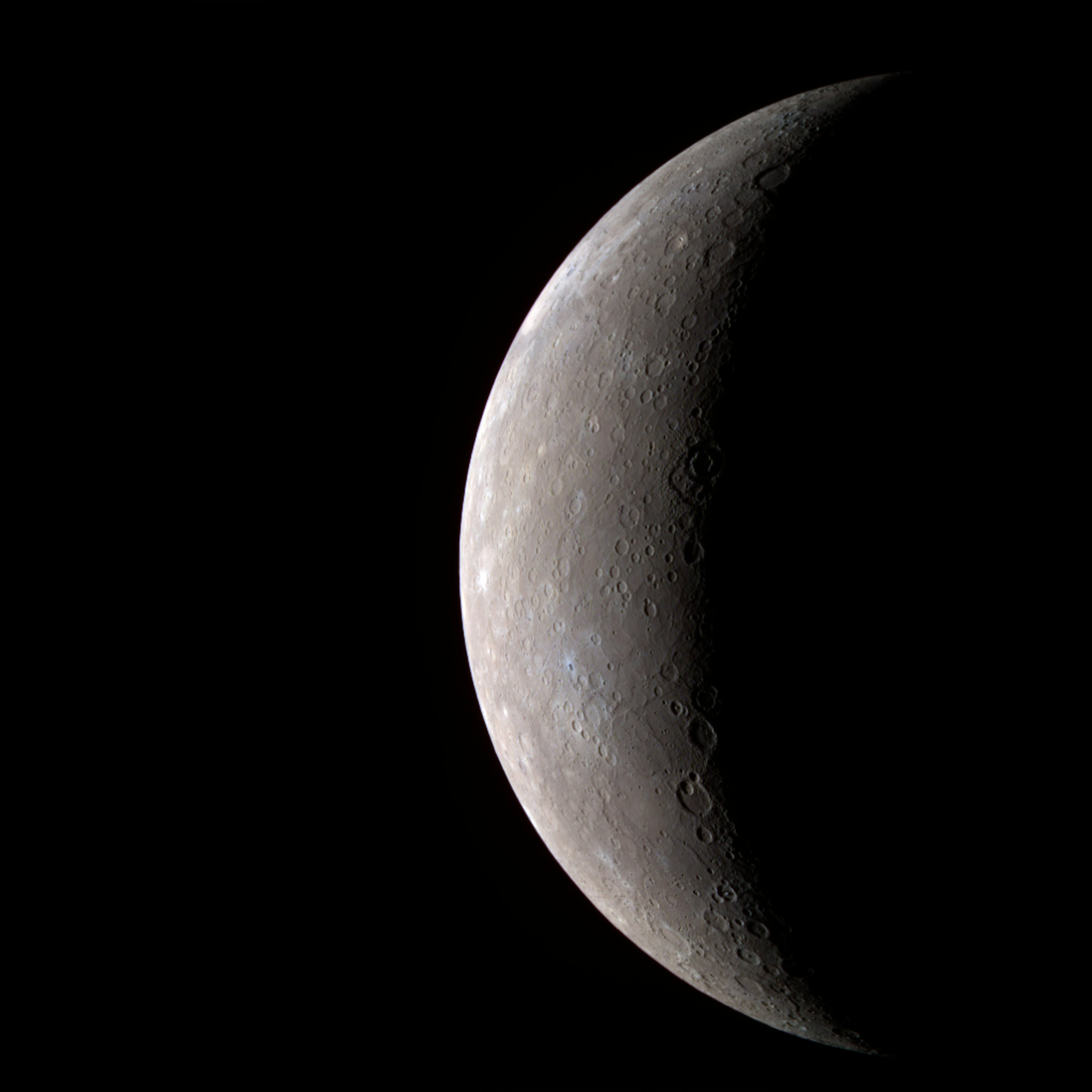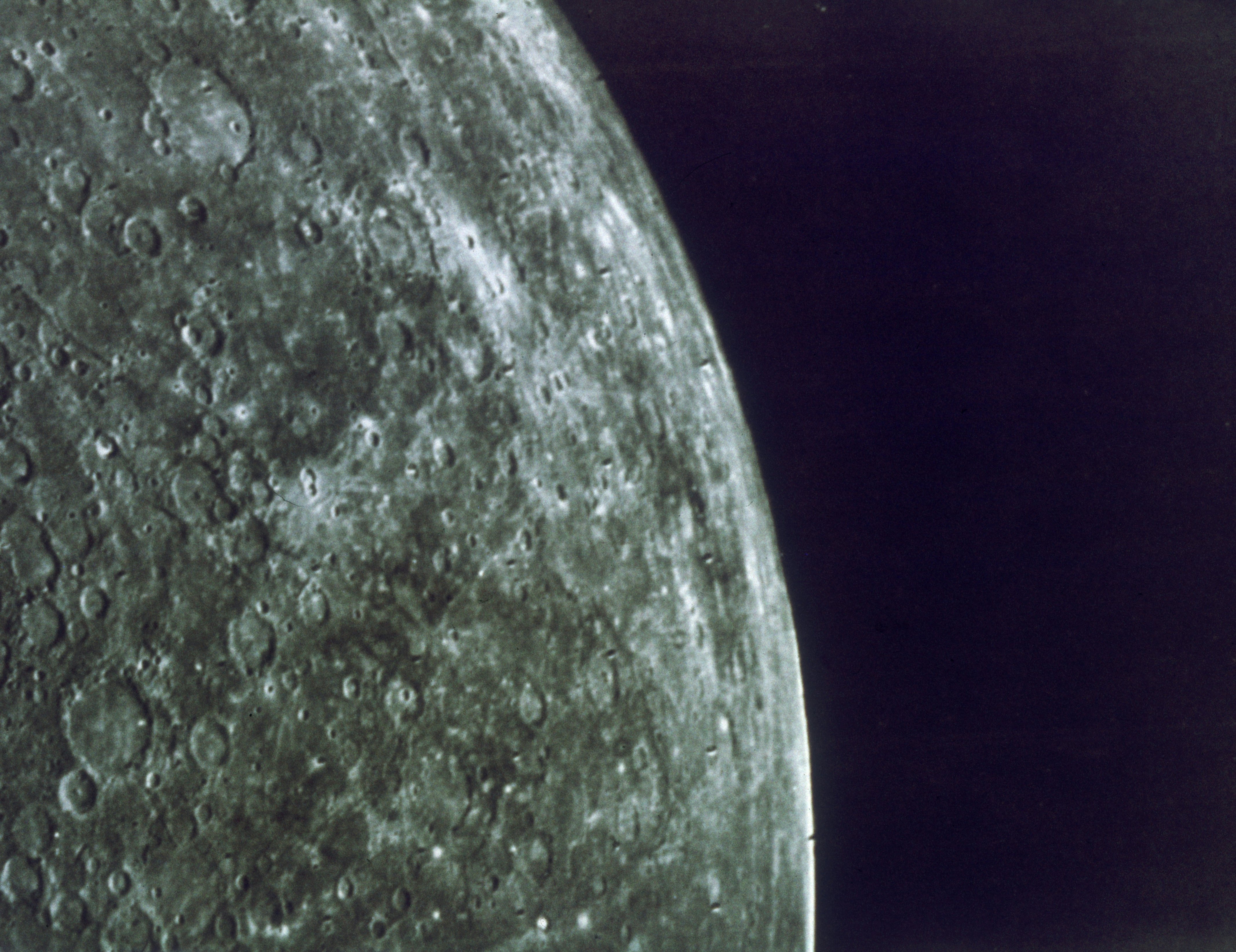
Thursday morning is your chance to catch a glimpse of Mercury in the sky.
The Solar System’s smallest (and arguably weirdest) planet is hard to see from Earth because it’s usually lost in the overwhelming glow of the Sun. But in the early morning of September 5, Mercury will appear far enough from the rising Sun to be visible against a dark backdrop. Here’s everything you need to know.
How to See Mercury in the Early Morning Sky
Look low on the horizon, a bit below and to the right of the Moon. Start about an hour before sunrise and keep looking for 20 or 30 minutes. Mercury should be the brightest object in the eastern sky. As a bonus, you should be able to see two other planets, Mars and Jupiter, lined up in a row with Mercury. It’s worth looking with the unaided eye, but your view will be best with good binoculars or a small telescope.

Why is Mercury Worth Seeing?
As you stand there cradling your cup of coffee in the predawn darkness, looking up at a tiny point of light in the dark sky, keep in mind what you’re really seeing: the Sun reflecting off a slowly shrinking planet with a thick layer of diamond buried beneath its surface, which orbits scorchingly close to the Sun but still hides frozen water deep in shadowed craters — and may once have hidden life beneath its scarred surface. You’re also looking up at the smashed remains of NASA’s Messenger spacecraft. And soon, we might learn even more about this planet. The European Space Agency plans to study Mercury with its BepiColombo mission, which will arrive there early next spring.
When to See Mercury’s Greatest Elongation West
Mercury will appear farthest west of the Sun (astronomers call this its “greatest elongation”) just before dawn on September 5. It’s worth getting up early to skywatch over the weekend, though, because Mercury will get brighter over the next few days. On the morning of September 5, Mercury will be in its waxing crescent phase, meaning that just a tiny sliver of the planet’s day light side is pointed toward Earth. But over the next few days, the planet waxes, meaning that a larger slice of sunlit planet will be visible each morning. As Mercury gets brighter, it will still be far enough from the Sun to show up.
How Does Mercury’s Elongation Work?
Mercury races around the Sun once every 88 days. Earth, meanwhile, trots around the Sun once every 365 days. Every 116 days, Mercury blows past Earth, calling out “on your left!” When that happens, Mercury passes right between Earth and the Sun; astronomers call that an inferior conjunction (a superior conjunction happens when Mercury is on the far side of the track, so the Sun is between it and Earth).
For a few weeks after the inferior conjunction, we can see Mercury in the night sky before it pulls so far ahead that it’s around the bend of the track and out of our sight again. This chunk of time is called an apparition. And Mercury’s greatest elongation is the moment during an apparition when it’s farthest away from the Sun (which sits in the middle of the track, being blindingly bright) in our field of view — the moment right between an inferior conjunction and a superior conjunction.
When Will Mercury’s Greatest Elongation Happen Again?
If you miss this week’s early morning show (perhaps because, like your faithful correspondent, you don’t believe the world actually exists that early in the morning), try again on November 16 in the hour just after sunset. This time, Mercury will be east of the setting Sun, because it’s coming back from a superior conjunction and racing toward an inferior one.






